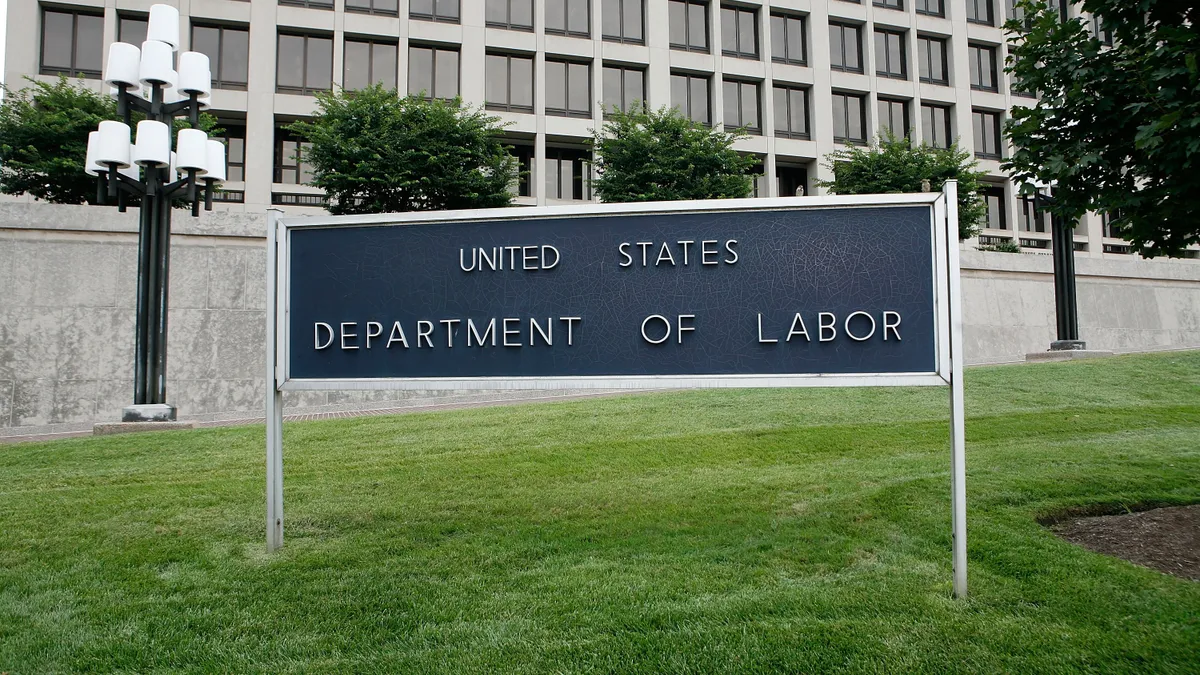Dive Brief:
- The U.S. Department of Labor announced Monday a final rule implementing President Joe Biden’s executive order raising the federal contractor minimum wage from $10.95 to $15 an hour. The final rule retains the Jan. 30, 2022, deadline by which agencies must incorporate the new rate into new contract solicitations.
- The requirements apply to federal contractors that perform work in all 50 U.S. states as well as U.S. territories, Jessica Looman, acting administrator of DOL’s Wage and Hour Division, said during a media briefing Monday. It also ends the tip credit as well as the subminimum wage provision for certain employees with disabilities.
- The new rate does not apply to eligible federal contracts entered into before Jan. 30, 2022, but will apply to extensions of such contracts finalized after the deadline. Beginning Jan. 1, 2023, the minimum wage will increase annually by an amount determined by the Secretary of Labor. Looman said the agency would soon provide guidance and educational outreach to contractors on how to implement the rule.
Dive Insight:
The legislation's effect on construction companies will most likely be minimal, as most construction firms that do business with the federal government already pay workers at wage rates higher than the $15 per hour minimum established in the rule, said Ben Brubeck, Associated Builders and Contractors vice president of regulatory, labor and state affairs, in a press statement.
It has been nearly four months since DOL published its proposed rule implementing Executive Order 14026, which Biden issued in April.
Questioned as to whether the implementation of the order would lead to excessive costs for contracting businesses, Looman said public comments on the proposal were "mostly very positive" and that the agency has been in contact with the Small Business Administration in developing guidance material specifically for small businesses. She noted that when an agency enters a contract, it must pay for the services provided.
"We want to make sure we are leveraging the buying power of the federal government to ensure fair wages for workers," Looman said. "Because we are spending dollars on federal contracts, it really is our job to ensure wages are fair."
In a tweet Monday, the agency said more than half of the workers benefiting from the wage increase order were women, while 25% were Hispanic and 15% were Black. Looman said that while the agency did not have a good estimate of all the workers that may be impacted by the rule, those in the childcare, restaurant and maintenance industries would most likely be impacted in states and localities where minimum wages had not recently increased.
We’re raising the wage for thousands of federal contractors to improve the economic security of thousands of families and reverse decades of income inequality. https://t.co/Ut4kPPLWAe pic.twitter.com/6WUSVIMtro
— U.S. Department of Labor (@USDOL) November 22, 2021
Looman also said the rule could be seen as a "continuation of the evolution of the federal government using its purchasing power to increase wages," citing former President Barack Obama’s 2014 executive order — and subsequent final rule — raising the federal contractor minimum to $10.10 an hour.
A fact sheet on the rule noted that certain contracts are excluded from the requirements, including grants within the meaning of the Federal Grant and Cooperative Agreement Act; certain procurement contracts for construction that are not subject to the Davis-Bacon Act; and certain contracts for services that are exempted from coverage under the Service Contract Act or its implementing regs, among others.
As part of the regs, contractors must meet notice-and-posting requirements by, for example, posting the applicable wage determination in a prominent and accessible place at the worksite, according to the fact sheet.
Future increases to the minimum must be determined by the Secretary of Labor and published at least 90 days before they take effect. The rule further specifies that such increases must be: not be than the amount in effect on the date of determination; increased according to the annual percentage increase of the Consumer Price Index for Urban Wage Earners and Clerical Workers; and rounded to the nearest multiple of $0.05.














